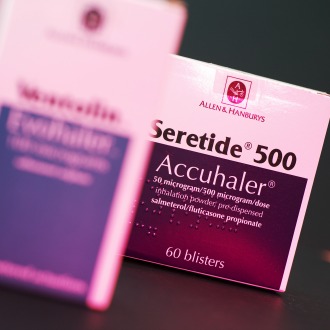Pulse’s article ‘BMA wholly rejects NICE recommendations on asthma in scathing response’ states the BMA view that the NICE draft guideline contradicts and is in opposition to the BTS-SIGN guideline.
Having sat on both guidance committees, I refute this. There is nothing in the NICE draft guideline that disagrees with the BTS-SIGN guideline in letter or in spirit.
Firstly the article implies that BTS-SIGN recommends ‘trial of treatment’ as a valid diagnostic option. Close reading will show that this has a minor role in BTS-SIGN. The trial of treatment option was included to recognise that this is sometimes needed for pragmatic reasons rather than best practice, and BTS-SIGN laid down reasonable criteria for judging success. In people with intermediate probability of having asthma – those with true diagnostic doubt – objective testing is vital.
There are many areas where both guidelines converge. BTS-SIGN has advocated quality-assured spirometry with reversibility testing as the first test, rather than peak expiratory flow, which many still use, restricting spirometry to COPD. There is no justification for this outdated practice and saying it’s what BTS-SIGN recommends is false. BTS SIGN gives a prominent role to FENO, which is not implemented as GPs don’t have access to it. The NICE draft guideline supports implementation of objective testing as was intended in BTS-SIGN.
For the BMA to suggest that GPs and nurses will not be able to use objective testing as it’s too complicated or that the recommendations represent a change in practice that cannot be achieved is unhelpful if we want to deliver high-quality care to people with asthma.
We recognise there will be challenges to implementing the recommendations. NICE is planning preparatory work with commissioners to ensure these issues are tackled constructively. When done rationally and with proper resources, primary care is good at adopting change.
When I started as a GP, we diagnosed ‘heart failure’ through a stethoscope and treated with diuretics; now we routinely use a blood biomarker (BNP) and imaging scans to make the diagnosis and guide expensive targeted treatment. I don’t remember a big fuss about GPs having to order a blood test or a scan, or refer to a local fast-access clinic? This proposes a similar paradigm-shift and can be achieved as painlessly.
NICE has sought views from organisations, healthcare professionals and members of public whom the guideline will benefit. The guideline development group have considered these comments and their responses will be published on the NICE website alongside the final guideline which is anticipated for August.
Professor Thomas is a member of NICE Guideline Development Group, Asthma Diagnosis and Monitoring and the BTS-SIGN UK Asthma Guideline steering group. He’s also chair of the non-pharmacological management section and a former member of the diagnosis and monitoring section.
Pulse October survey
Take our July 2025 survey to potentially win £1.000 worth of tokens















